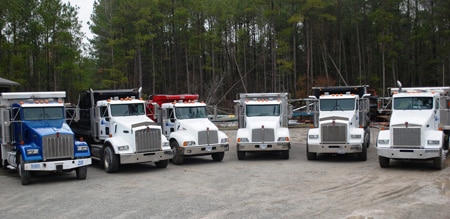… FMCSA DOT Required Drug Testing …
FMCSA: Random Testing History and Development in the Regulated Trucking Industry.
Random testing for both controlled substances and alcohol within the trucking industry and the other transportation modes is a fact of life and for the most part, generally accepted. Yes there is some grumbling by CDL holders and that this testing is an intrusion into their privacy. That issue of privacy invasion as a violation of the Fourth Amendment was settled by the US Supreme Court in 1989 (SKINNER v. RAILWAY LABOR EXECUTIVES’ ASSN., 489 U.S. 602 (1989) and TREASURY EMPLOYEES v. VON RAAB, 489 U.S. 656 (1989). These decision were applicable to all of the transportation modes and the Von Raab decision was applicable to government employees that were employed in safety sensitive positions along with other designated positions.
These two decisions were a split decision of 5-4 stating that random drug test was not a violation of the Fourth Amendment prohibition against government mandated search and seizure. The nexus was the court found public safety was more important than an individual’s right to privacy. The Opinions as stated that government mandated drug testing was not illegal search and seizure when and where public safety was concerned. It is noted that these Opinions have not been directly challenged.
Random drug testing began in December 21, 1989 in accordance with the regulations as published on November 21, 1988. Testing was phased in based upon the number of employers but with random testing in place by one year from December 21, 1989. No size differentiation was given for the implementation of the random drug testing.
The rate of random drug testing was and still is 50%. It is applicable to all companies that operate commercial motor vehicles meeting the requirements of 49 CFR part 390, Section 5 (Definitions). The number of employees does not matter.
It is interesting to note the first regulations for random drug testing were considerably shorter than what they are now.
The regulations published in 1988 read as follows:
49 CFR Part § 391.109: Random testing requirements
(a) A motor carrier shall use a random selection process to select and request a driver to be tested for the use of controlled substances.
(b) A driver shall submit to controlled substance testing when selected by a random selection process used by a motor carrier.
§ 391.111: Random testing procedures
(a) The sample shall consist of a urine specimen.
(b) A motor carrier shall ensure its drug testing program conforms to 49 CFR part 40.
Readers should make note that the original drug test regulations for motor carriers were placed in 49 CFR part 391. Alcohol testing was included in these regulations on February 15, 1994. On August 17, 2001, they were moved to 49 CFR part 382 after FMCSA was formed and organized.
FMCSA was formed as an Act of Congress as a new agency within DOT incorporating the Office of Motor Carrier Safety.
Currently the applicable regulation for random testing of controlled substances and alcohol is 49 CFR 382.305.
More information on FMCSA required drug testing:
Owner Operators
Private Fleets
For Hire Carriers
Small Trucking & Bus Companies







